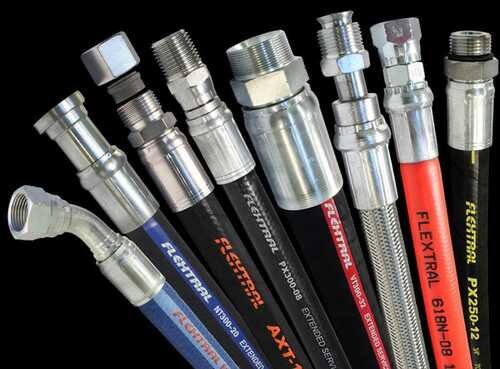A hydraulic hose pipe is a flexible tube designed to carry high-pressure hydraulic fluid. It’s a crucial component in many hydraulic systems, enabling the transmission of power and control to various actuators and machinery.
Here’s a breakdown of its key features:
- Flexibility: Hydraulic hoses are designed to bend and move with the equipment they’re connected to, allowing for greater maneuverability.
- High-Pressure Resistance: They are built to withstand extremely high pressures, typically ranging from 3,000 to 10,000 psi (pounds per square inch).
- Fluid Compatibility: Hoses are made from materials compatible with the specific hydraulic fluids used in the system, ensuring proper performance and preventing degradation.
- Durability: They are designed to withstand harsh environments, including extreme temperatures, vibrations, and abrasion.
- Various Sizes and Configurations: Hydraulic hoses come in a wide range of sizes and configurations to meet the specific needs of different applications.
Common Uses:
Hydraulic hose pipes are used in a wide range of applications, including:
- Construction Equipment: Excavators, bulldozers, cranes, and other heavy machinery rely on hydraulic hoses to operate their hydraulic systems.
- Industrial Machinery: Forklifts, presses, and other industrial equipment use hydraulic hoses for power transmission and control.
- Automotive Systems: Power steering, brakes, and suspension systems in vehicles often utilize hydraulic hoses.
- Aerospace and Marine Applications: Hydraulic hoses are used in aircraft and marine vessels for various functions, including flight control and propulsion.
Important Considerations:
- Proper Selection: Choosing the right hydraulic hose for your application is crucial for safety and performance. Factors to consider include pressure rating, fluid compatibility, temperature range, and hose length.
- Regular Inspection and Maintenance: Hydraulic hoses should be regularly inspected for signs of wear, damage, or leaks. Replacing damaged hoses promptly is essential to prevent accidents and ensure system reliability.
Let me know if you have any other questions about hydraulic hose pipes!

